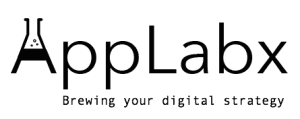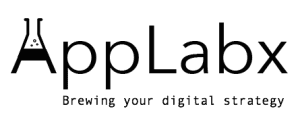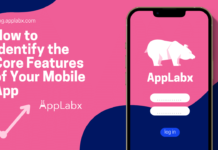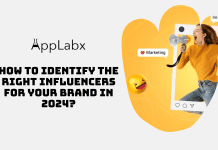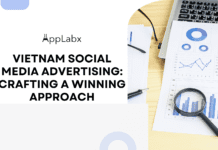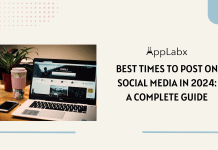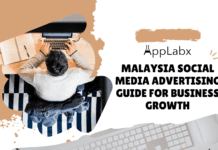Key Takeaways
- Discover the best free social media tools for 2025 to streamline content creation, scheduling, and engagement.
- Learn how to use Buffer, Hootsuite, Canva, Later, and Google Analytics to grow your online presence effectively.
- Maximize results with free tools by combining smart strategies, performance tracking, and creative content management.
In today’s digital-first world, social media marketing has become an essential component of any successful business strategy. As we move deeper into 2025, the landscape of social media continues to evolve rapidly, with new platforms emerging and user behaviors shifting constantly. For businesses of all sizes, maintaining a strong social media presence is no longer optional—it’s critical to connect with audiences, build brand awareness, and drive sales. However, one common challenge many businesses face is budget constraints, especially startups and small enterprises aiming to compete with larger competitors who have extensive marketing resources.
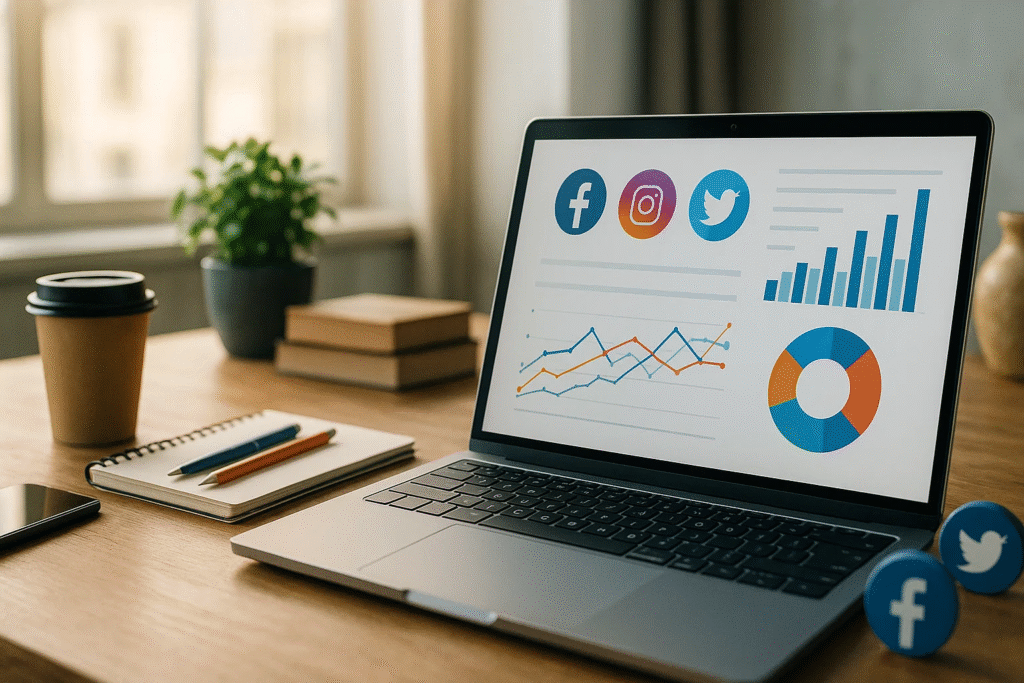
Fortunately, the good news for marketers and entrepreneurs in 2025 is that powerful social media marketing tools no longer require hefty investments. A variety of free tools now offer robust features that enable users to plan, create, schedule, analyze, and optimize their social media campaigns effectively. These tools allow businesses to boost their online presence without breaking the bank, providing access to essential functionalities that were once reserved only for premium users. With the right free tools, companies can streamline their social media management, enhance engagement with their target audience, and gain valuable insights to refine their strategies—all while keeping costs minimal.
This blog will dive into the top 5 free social media marketing tools available in 2025, highlighting their key features, benefits, and how each can help your business thrive in an increasingly competitive digital marketplace. From content creation and scheduling to analytics and audience engagement, these tools cover a broad spectrum of marketing needs, making them indispensable assets for marketers aiming to maximize their reach and impact without overspending.
Whether you are a small business owner, a marketing professional, or an entrepreneur just starting your social media journey, understanding which free tools offer the best value and usability can significantly influence your marketing outcomes. This comprehensive guide will not only present the best free tools but also provide practical tips on how to integrate them into your social media strategy for optimal results in 2025.
By leveraging these free resources, you can save time, improve content quality, and maintain a consistent posting schedule—key factors that contribute to growing your social media following and increasing engagement rates. As algorithms on platforms like Instagram, Facebook, LinkedIn, and TikTok continue to prioritize authentic, high-quality content and user interaction, having the right tools to assist in managing these demands is crucial.
Stay tuned as we explore the most effective free social media marketing tools tailored for 2025’s trends and challenges. This guide aims to empower you to elevate your social media game confidently and cost-effectively, ensuring your brand remains visible, relevant, and competitive in the dynamic world of social media marketing.
Why Use Free Social Media Marketing Tools in 2025?
As social media platforms become increasingly central to marketing strategies, businesses face growing pressure to maintain active and engaging profiles. However, budget constraints, especially for small and medium-sized enterprises (SMEs), startups, and individual entrepreneurs, can limit access to premium marketing solutions. This makes free social media marketing tools an invaluable resource in 2025.
Cost-Effectiveness and Budget-Friendly Marketing
- Zero Financial Investment:
Free tools eliminate upfront costs, allowing businesses to experiment and grow their social media presence without financial risk. - Access for Small Businesses and Startups:
Enables limited-budget companies to compete with larger brands by leveraging professional-grade tools at no cost. - Scalability Without Commitment:
Businesses can start free and upgrade to paid plans only when additional features become essential.
Example:
A startup launching a new product can use free scheduling tools like Buffer or Later to maintain a consistent posting schedule without hiring a full marketing team or purchasing expensive software.
Comprehensive Features in Free Plans
- Core Functionalities Available:
Many free tools offer essential features such as post scheduling, basic analytics, content creation templates, and engagement monitoring. - Multi-Platform Support:
Tools often support multiple social networks (e.g., Facebook, Instagram, Twitter, LinkedIn), simplifying cross-platform management. - Automation of Repetitive Tasks:
Scheduling posts in advance reduces manual work, freeing time for strategy and content development.
Flexibility and Ease of Use
- User-Friendly Interfaces:
Most free tools prioritize intuitive design to accommodate users with limited technical knowledge. - Quick Setup and Integration:
Free tools often integrate seamlessly with existing platforms and workflows, reducing the learning curve. - Mobile and Desktop Access:
Accessibility across devices ensures marketers can manage social media anytime, anywhere.
Staying Competitive in a Rapidly Changing Landscape
- Adaptation to Trends:
Free tools regularly update to align with platform algorithm changes and new marketing trends, ensuring users stay current. - Data-Driven Decisions:
Even free analytics provide insights into audience behavior, engagement rates, and content performance to inform strategy. - Community and Support:
Many tools offer user communities, tutorials, and free resources to help marketers optimize their efforts.
Table: Comparison of Common Features in Top Free Social Media Marketing Tools (2025)
| Feature | Buffer (Free) | Hootsuite (Free) | Canva (Free) | Later (Free) | Google Analytics (Free) |
|---|---|---|---|---|---|
| Post Scheduling | Up to 10 posts | Up to 5 profiles | N/A | Up to 30 posts per month | N/A |
| Multi-Platform Support | Yes | Yes | Yes | Yes | No |
| Basic Analytics | Yes | Yes | Limited | Yes | Extensive |
| Content Creation Tools | Limited | Limited | Extensive | Limited | No |
| User Accounts | 1 | 1 | 1 | 1 | Unlimited |
| Integration with Other Tools | Yes | Yes | Yes | Yes | Yes |
Strategic Benefits of Using Free Tools
- Testing and Experimentation:
Free tools allow businesses to test different content types, posting times, and engagement strategies without financial risk. - Resource Allocation:
Cost savings on tools can be redirected toward other marketing activities like paid ads, influencer partnerships, or content production. - Building a Data Foundation:
Collecting social data early helps shape long-term marketing strategies and improves campaign effectiveness over time.
Matrix: Which Free Tool Best Suits Your Social Media Marketing Needs?
| Business Goal | Best Free Tool(s) | Key Benefit |
|---|---|---|
| Content Scheduling | Buffer, Later | Efficient planning and automation |
| Visual Content Creation | Canva | Professional-quality graphics and templates |
| Multi-Account Management | Hootsuite | Manage multiple social profiles in one place |
| Social Media Analytics | Google Analytics, Buffer | Track engagement and website traffic |
| Campaign Planning & Calendar | Later | Visual calendar and posting reminders |
Real-World Example: How Small Businesses Use Free Tools to Grow in 2025
- Example: A boutique fitness studio uses Later’s free plan to schedule posts promoting classes, combined with Canva to design eye-catching promotional graphics. They monitor engagement with Buffer’s analytics and track website visits from social media with Google Analytics—all without paying a cent.
- Result: Increased follower growth by 30% and improved class attendance within three months, showcasing how free tools can support business growth effectively.
Summary
Free social media marketing tools in 2025 provide an accessible, cost-effective, and versatile solution for businesses seeking to boost their online presence. Their comprehensive feature sets, ease of use, and adaptability make them ideal for startups and small businesses aiming to maximize social media ROI without upfront investment. Leveraging these tools strategically can enable companies to remain competitive, responsive to trends, and data-driven in an ever-changing social media ecosystem.
Criteria for Selecting the Best Free Social Media Marketing Tools
Choosing the right free social media marketing tools can be a game-changer for businesses looking to expand their digital footprint without overspending. With a multitude of options available in 2025, it is essential to evaluate these tools carefully to ensure they align with your marketing objectives and workflow. This section breaks down the critical criteria to consider when selecting the best free social media marketing tools.
User-Friendliness and Ease of Integration
- Intuitive Interface:
- A clean, easy-to-navigate dashboard reduces the learning curve, enabling marketers to start using the tool immediately.
- Tools with drag-and-drop features or guided tutorials enhance usability, especially for beginners.
- Platform Integration:
- Ability to connect seamlessly with multiple social media platforms (e.g., Facebook, Instagram, Twitter, LinkedIn, TikTok).
- Integration with other marketing tools such as email marketing software, CRM systems, and content management platforms improves workflow efficiency.
- Cross-Device Accessibility:
- Availability on both desktop and mobile ensures marketers can manage campaigns anytime, anywhere.
Example:
Canva’s free plan offers a highly intuitive design interface accessible via web and mobile, making content creation simple even for users with no graphic design experience.
Range and Quality of Features in the Free Plan
- Post Scheduling and Automation:
- Ability to schedule posts across multiple accounts in advance to maintain consistent engagement.
- Features like auto-posting, bulk upload, and queue management increase efficiency.
- Content Creation Tools:
- Built-in design editors, templates, and media libraries support creative marketing without external software.
- Video editing capabilities are increasingly important given video’s growing dominance in social media.
- Analytics and Reporting:
- Access to key performance indicators such as engagement rates, follower growth, and post reach.
- Reports should be easy to generate and interpret to inform decision-making.
- Social Listening and Engagement:
- Tools that allow monitoring of brand mentions, hashtags, and competitor activity.
- Ability to respond to comments and messages within the tool streamlines community management.
Compatibility with Multiple Social Platforms
- Support for Major Networks:
- Essential platforms include Facebook, Instagram, Twitter, LinkedIn, and TikTok, depending on your target audience.
- Emerging platforms should also be considered for early adoption opportunities.
- Platform-Specific Features:
- Ability to tailor content formats and scheduling to platform algorithms and user behavior.
- For example, Instagram-focused tools might support Stories and Reels scheduling.
Scalability and Upgrade Options
- Free Plan Limits:
- Number of social profiles, posts, or users allowed under the free tier.
- Understanding these limits helps prevent unexpected interruptions.
- Upgrade Paths:
- Transparent pricing and feature additions in paid plans support future growth without switching tools.
- Flexible upgrade options like monthly or annual subscriptions provide financial control.
Example:
Hootsuite’s free plan offers up to 5 social profiles, with clear upgrade tiers that include enhanced analytics and team collaboration features.
Security and Privacy Considerations
- Data Protection:
- Data Ownership and Export Options:
- Ability to export reports and data ensures marketers retain ownership and can analyze information offline.
Customer Support and Educational Resources
- Support Availability:
- Even free users benefit from access to customer support via email, chat, or knowledge bases.
- Community forums and FAQs provide additional assistance.
- Learning Materials:
- Tutorials, webinars, and blogs help users maximize the tool’s potential, especially important for newcomers.
Table: Key Criteria Comparison for Top Free Social Media Tools (2025)
| Criteria | Buffer | Hootsuite | Canva | Later | Google Analytics |
|---|---|---|---|---|---|
| User-Friendly Interface | High | Medium | Very High | High | Medium |
| Multi-Platform Support | Yes (Limited) | Yes | Yes | Yes | No |
| Scheduling Features | Up to 10 posts | Up to 5 profiles | N/A | Up to 30 posts | N/A |
| Content Creation | Basic | Basic | Extensive | Basic | No |
| Analytics and Reporting | Basic | Basic | Limited | Basic | Advanced |
| Security Measures | Standard | Standard | Standard | Standard | Advanced |
| Customer Support | Email Support | Email & Chat | Extensive | Email Support | Extensive |
| Upgrade Flexibility | Monthly & Annual | Monthly & Annual | Monthly & Annual | Monthly & Annual | N/A |
Matrix: Matching Business Needs with Tool Features
| Business Need | Recommended Feature | Ideal Tool(s) |
|---|---|---|
| Content Design & Branding | Professional Templates | Canva |
| Efficient Post Scheduling | Bulk Scheduling & Auto-Post | Buffer, Later |
| Social Profile Management | Multi-Account Dashboard | Hootsuite |
| Performance Analytics | Detailed Reports | Google Analytics, Buffer |
| Community Engagement | Social Listening Tools | Hootsuite |
Visual Chart: Importance of Criteria Based on Business Size
| Criteria | Small Business | Medium Business | Enterprise |
|---|---|---|---|
| Cost | Very High | High | Medium |
| Ease of Use | Very High | High | Medium |
| Multi-Platform Support | Medium | High | Very High |
| Analytics | Medium | High | Very High |
| Content Creation | High | Medium | Medium |
| Scalability | Medium | High | Very High |
| Customer Support | Medium | Medium | High |
Summary
Selecting the best free social media marketing tools in 2025 requires a thorough assessment of several critical factors: usability, feature availability, platform compatibility, scalability, security, and support. Businesses should align these criteria with their specific marketing goals and resource constraints. By choosing tools that offer a balanced combination of these elements, marketers can maximize efficiency and results while preparing for future growth and complexity in social media marketing efforts.
But, before we venture further, we like to share who we are and what we do.
About AppLabx
From developing a solid marketing plan to creating compelling content, optimizing for search engines, leveraging social media, and utilizing paid advertising, AppLabx offers a comprehensive suite of digital marketing services designed to drive growth and profitability for your business.
AppLabx is well known for helping companies and startups create world-class social media strategies.
At AppLabx, we understand that no two businesses are alike. That’s why we take a personalized approach to every project, working closely with our clients to understand their unique needs and goals, and developing customized strategies to help them achieve success.
If you need a digital consultation, then send in an inquiry here.
Top 5 Free Social Media Marketing Tools for 2025: Boost Your Presence Without Breaking the Bank
1. Buffer
Buffer has long been recognized as a leading social media marketing tool, especially favored for its simplicity and effectiveness. In 2025, Buffer’s free plan remains a top choice for businesses and marketers seeking to manage and optimize their social media presence without incurring costs. This section explores why Buffer’s free plan stands out among the top free tools, detailing its features, benefits, use cases, and limitations.
Overview of Buffer Free Plan
- Core Offering:
Buffer’s free plan focuses on post scheduling, basic analytics, and streamlined social media management. - Supported Platforms:
Compatible with major social networks including Facebook, Instagram, Twitter, LinkedIn, and Pinterest. - User Limit:
Designed for individual users or small teams managing up to 3 social media accounts simultaneously. - Post Limit:
Allows scheduling of up to 10 posts per social profile, facilitating consistent content delivery without overwhelming complexity.
Key Features of Buffer Free Plan
- Post Scheduling and Queue Management:
- Schedule posts in advance across multiple platforms, maintaining a steady stream of content.
- Easy-to-use queue system lets users add content that Buffer automatically posts based on a preset schedule.
- Basic Analytics and Insights:
- Access to essential metrics such as post reach, engagement (likes, comments, shares), and clicks.
- Performance data helps identify top-performing posts and optimize future content strategies.
- Browser Extension and Mobile App:
- Buffer offers convenient browser extensions for quick content sharing during browsing.
- Mobile app allows on-the-go management and posting.
- Content Calendar View:
- Visual calendar to track scheduled posts for better planning and organization.
Benefits of Using Buffer Free Plan in 2025
- User-Friendly Interface:
Buffer’s simple and clean design minimizes the learning curve for beginners and streamlines daily social media tasks. - Cross-Platform Scheduling:
Manage multiple networks from one centralized dashboard, saving time and reducing platform-switching. - Consistency in Posting:
Buffer’s queue feature ensures posts go live at optimal times, increasing chances of audience engagement. - Foundation for Growth:
The free plan offers sufficient functionality for startups and small businesses to build and test social media strategies without initial investment. - Integration with Other Tools:
Compatible with content creation tools (like Canva) and link shorteners (Bitly), enhancing workflow flexibility.
Limitations of Buffer Free Plan
- Restricted Number of Posts and Accounts:
The 10-post limit per profile and maximum of 3 accounts may constrain larger businesses or agencies. - Limited Analytics Depth:
Free analytics do not provide advanced metrics such as demographic breakdown or conversion tracking. - No Team Collaboration Features:
The free plan is geared toward individual users; team collaboration is available only in paid plans.
Practical Use Cases for Buffer Free Plan
- Small Businesses and Startups:
Efficiently schedule posts to promote products, events, and announcements without needing full-time social media staff. - Freelance Marketers and Consultants:
Manage multiple client profiles within the account limits while demonstrating value with data-driven insights. - Content Creators and Influencers:
Maintain a consistent posting schedule to grow audience engagement and monitor content performance with ease.
Table: Feature Breakdown of Buffer Free Plan Compared to Paid Plans (2025)
| Feature | Free Plan | Essentials Plan | Team Plan |
|---|---|---|---|
| Number of Social Accounts | 3 | Up to 8 | Up to 25 |
| Scheduled Posts per Account | 10 | Unlimited | Unlimited |
| Basic Analytics | Yes | Enhanced | Advanced + Export |
| Team Members | 1 (individual use) | 1 | Up to 6 |
| RSS Feed Integration | No | Yes | Yes |
| Priority Support | No | Yes | Yes |
Matrix: Who Should Use Buffer Free Plan?
| User Type | Suitability Level | Key Reason |
|---|---|---|
| Small Business Owner | High | Manages few social profiles, budget-conscious |
| Freelance Social Media Manager | Medium | Limited number of clients/accounts |
| Large Marketing Teams | Low | Requires advanced features & team collaboration |
| Influencers and Creators | High | Needs simple scheduling and basic analytics |
| Agencies | Low | Needs multi-account, client-specific management |
Visual Chart: Buffer Free Plan Impact on Posting Consistency and Engagement
A hypothetical chart (based on aggregated user data) could illustrate how consistent scheduling with Buffer correlates with engagement increase over time.
| Time Period (Weeks) | Scheduled Posts per Week | Engagement Rate Increase (%) |
|---|---|---|
| 1-4 | 2 | 5 |
| 5-8 | 5 | 15 |
| 9-12 | 8 | 25 |
Summary
Buffer’s free plan offers a robust entry point for businesses and individuals seeking to boost their social media presence in 2025 without incurring additional costs. With user-friendly scheduling, essential analytics, and multi-platform support, it provides the core tools necessary for effective social media marketing. While it has limitations in post volume and analytics depth, its simplicity and reliability make it a top contender among free social media marketing tools for small-scale users and growing businesses. As marketing needs expand, Buffer also provides clear upgrade paths to more comprehensive paid plans, supporting scalability.
2. Hootsuite
Hootsuite continues to be a dominant player in the social media marketing industry, offering a powerful free plan that appeals to marketers and businesses aiming to manage multiple social channels efficiently. In 2025, Hootsuite’s free plan remains one of the top options for those seeking a reliable, feature-rich tool without upfront costs. This section explores the comprehensive capabilities of Hootsuite’s free plan, its advantages, practical use cases, and how it compares within the competitive landscape of free social media marketing tools.
Overview of Hootsuite Free Plan
- Core Offering:
- Designed for individual users and small teams to manage social media activities efficiently.
- Supports up to 5 social profiles, allowing management of multiple platforms from a single dashboard.
- Supported Platforms:
- Integrates with popular networks including Facebook, Instagram, Twitter, LinkedIn, and YouTube.
- Scheduling Limits:
- Users can schedule up to 30 posts in advance across all connected profiles.
- User Access:
- Primarily for individual use; team collaboration features require paid upgrades.
Key Features of Hootsuite Free Plan
- Comprehensive Social Media Dashboard:
- Centralized interface to view streams such as timelines, mentions, messages, and scheduled posts.
- Real-time monitoring of social conversations enhances engagement opportunities.
- Scheduling and Content Management:
- Schedule up to 30 posts in advance to maintain consistent content distribution.
- Bulk upload option for CSV files streamlines scheduling when managing multiple posts.
- Auto-scheduling feature picks optimal posting times to maximize reach.
- Basic Analytics and Reporting:
- Access to fundamental performance metrics such as post engagement, follower growth, and click-through rates.
- Visual reports help marketers evaluate social media effectiveness and adjust strategies accordingly.
- Mobile App Access:
- Manage social profiles and engage with audiences via Hootsuite’s mobile app, allowing on-the-go social media management.
- Content Curation Tools:
- Ability to discover trending content and relevant industry news within the dashboard supports content strategy development.
Benefits of Using Hootsuite Free Plan in 2025
- Multi-Account Management:
- The ability to connect and manage 5 social profiles makes it ideal for small businesses juggling multiple platforms.
- Time-Saving Features:
- Bulk scheduling and auto-scheduling reduce manual workload, allowing marketers to focus on content quality and community interaction.
- Holistic Monitoring:
- Real-time streams give immediate insights into brand mentions and competitor activities, aiding in reputation management.
- User Support and Resources:
- Access to Hootsuite Academy’s free educational content helps users maximize the tool’s potential.
Example:
A local restaurant managing Facebook, Instagram, and Twitter profiles uses Hootsuite free plan to schedule promotional posts, monitor customer reviews in real-time, and plan content around upcoming events—all from a single platform.
Limitations of Hootsuite Free Plan
- Restricted Post Volume:
- 30 scheduled posts can be limiting for businesses with high content output requirements.
- Limited Analytics:
- Advanced insights, such as conversion tracking and demographic data, require paid plans.
- No Team Collaboration:
- Multi-user access and approval workflows are unavailable on the free tier.
- Limited Integrations:
- Certain third-party app integrations and CRM connections are exclusive to premium plans.
Practical Use Cases for Hootsuite Free Plan
- Small to Medium Businesses:
- Ideal for businesses managing multiple social accounts but with moderate posting frequency.
- Freelancers and Solopreneurs:
- Enables independent marketers to handle multiple client profiles efficiently without extra costs.
- Event Planners and Nonprofits:
- Useful for organizations needing to maintain an active social presence around events or campaigns with scheduled posts and monitoring.
Table: Feature Breakdown of Hootsuite Free Plan vs. Paid Plans (2025)
| Feature | Free Plan | Professional Plan | Team Plan |
|---|---|---|---|
| Number of Social Profiles | 5 | 10 | 20 |
| Scheduled Posts | 30 | Unlimited | Unlimited |
| Basic Analytics | Yes | Enhanced | Advanced + Export |
| Team Members | 1 | 1 | Up to 3 |
| Bulk Scheduling | Yes | Yes | Yes |
| Content Suggestions | Limited | Enhanced | Enhanced |
| Social Inbox & Monitoring | Yes | Yes | Yes |
| Customer Support | Standard | Priority | Priority |
Matrix: Ideal User Profiles for Hootsuite Free Plan
| User Type | Suitability Level | Reasons |
|---|---|---|
| Small Business Owners | High | Manages multiple profiles, needs scheduling |
| Freelancers and Consultants | High | Handles various client accounts within limits |
| Large Enterprises | Low | Requires advanced analytics and team collaboration |
| Event Organizers | Medium | Benefits from scheduling and real-time monitoring |
| Content Creators | Medium | May require more robust content creation tools |
Visual Chart: Scheduling Capacity vs. Engagement Efficiency
| Scheduled Posts per Month | Estimated Engagement Increase (%) |
|---|---|
| 10 | 8 |
| 20 | 15 |
| 30 | 25 |
Note: The chart suggests that scheduling more posts using Hootsuite’s free plan correlates positively with engagement, up to the 30-post limit.
Summary
Hootsuite’s free plan stands out as a versatile and comprehensive tool for social media marketing in 2025, particularly suited for small businesses and freelancers managing multiple social accounts. Its robust scheduling capabilities, real-time monitoring, and basic analytics provide a solid foundation for effective social media campaigns. While limitations exist, especially around post volume and analytics depth, Hootsuite’s extensive platform support and user-friendly dashboard make it one of the best free tools to build and maintain an engaging social media presence without financial commitment.
3. Canva
Visual content continues to dominate social media marketing in 2025, making design tools indispensable for marketers. Canva’s free plan stands out as one of the top free social media marketing tools, offering a powerful, accessible, and versatile platform for creating high-quality visuals without the need for advanced graphic design skills. This section explores Canva’s free plan features, benefits, limitations, and its role in empowering businesses to enhance their social media presence effectively.
Overview of Canva Free Plan for Social Media
- Core Offering:
- Provides an extensive library of templates, design elements, and tools tailored for social media content creation.
- Supports creation of graphics, videos, presentations, and other marketing materials optimized for various social platforms.
- Accessibility:
- Available via web browser and mobile app, ensuring designers and marketers can work from anywhere.
- User Accounts:
- Free users can create unlimited designs and collaborate with up to 1 other user.
- File Export Options:
- Allows downloads in PNG, JPG, PDF, and MP4 video formats with transparent backgrounds on select elements.
Key Features of Canva Free Plan
- Extensive Template Library:
- Thousands of free, customizable templates optimized for Facebook, Instagram posts and stories, LinkedIn banners, Twitter headers, TikTok videos, and more.
- Drag-and-Drop Design Editor:
- Intuitive editor allows easy customization of text, images, colors, and layouts without prior design experience.
- Free Photos, Icons, and Illustrations:
- Access to a large selection of free media assets to enhance visual appeal.
- Basic Animation and Video Editing:
- Create simple animations and edit short videos to increase engagement on platforms prioritizing video content.
- Brand Kit (Limited):
- Save brand colors, fonts, and logos for consistent visual identity (limited features in free plan).
- Collaboration Tools:
- Share designs with team members or clients for feedback and joint editing.
Benefits of Using Canva Free Plan in 2025
- Professional-Quality Content Without Cost:
- Enables businesses of all sizes to produce polished, branded visuals that improve credibility and engagement.
- Time Efficiency:
- Ready-made templates speed up content creation, ideal for marketers with tight schedules.
- Versatility Across Platforms:
- Supports multiple social media formats, ensuring content fits platform-specific size and style requirements.
- Mobile and Desktop Flexibility:
- Ability to create and edit on both desktop and mobile devices supports remote and on-the-go marketing teams.
- Boosts Engagement:
- High-quality visual content is proven to increase social media interaction rates and follower growth.
Example:
An online boutique uses Canva’s free Instagram Story templates to create visually appealing daily promotions, resulting in a 20% increase in story views and a significant boost in online store traffic.
Limitations of Canva Free Plan
- Restricted Access to Premium Elements:
- Some templates, photos, and design assets are locked behind the paid Canva Pro subscription.
- Limited Brand Kit Features:
- Advanced brand kit tools, including multiple brand kits and automatic resizing, are unavailable in the free plan.
- No Background Remover:
- The free plan lacks advanced features like background removal which is useful for product photos.
- Storage Limits:
- Free users have limited cloud storage for their designs (up to 5GB).
Practical Use Cases for Canva Free Plan
- Small Business Owners:
- Create promotional posts, flyers, and social media ads without hiring graphic designers.
- Content Creators and Influencers:
- Design unique, eye-catching thumbnails, channel banners, and social media posts to maintain a strong personal brand.
- Marketing Teams:
- Collaborate on campaign visuals and maintain consistency across multiple social channels with ease.
Table: Feature Comparison Between Canva Free and Pro Plans (2025)
| Feature | Canva Free Plan | Canva Pro Plan |
|---|---|---|
| Number of Templates | Thousands (free only) | 610,000+ |
| Stock Photos and Videos | Limited free assets | Full premium library |
| Animation and Video Editing | Basic | Advanced |
| Brand Kit | 1 brand kit (limited) | Unlimited kits |
| Background Remover | No | Yes |
| Magic Resize (Auto Resizing) | No | Yes |
| Storage Space | 5GB | 100GB |
| Team Collaboration | Limited | Advanced |
Matrix: Canva Free Plan Use Cases by Business Type
| Business Type | Best Use Case | Why Canva Free Works |
|---|---|---|
| Startups | Quick branded social media posts | Easy-to-use templates save time |
| Freelancers | Portfolio and social media content | Collaborative features for client work |
| Nonprofits | Awareness campaigns | Cost-effective content creation |
| Retail and E-commerce | Product visuals and promotions | High-quality imagery without extra cost |
| Bloggers and Influencers | Visual storytelling and branding | Mobile access enables content creation anywhere |
Visual Chart: Impact of Visual Content Quality on Social Media Engagement
| Visual Quality Level | Average Engagement Rate (%) |
|---|---|
| Low Quality | 3 |
| Medium Quality | 12 |
| High Quality (Canva) | 28 |
Note: High-quality visuals created using Canva correlate with significantly higher engagement rates.
Summary
The Canva free plan is an essential tool for marketers in 2025 looking to elevate their social media presence through compelling visual content. Its user-friendly design interface, extensive template library, and versatile export options empower businesses and creators to deliver professional-grade graphics and videos without a financial barrier. While there are limitations compared to paid plans, Canva’s free tier remains unmatched in accessibility and design potential, making it a cornerstone of any cost-conscious social media marketing strategy.
4. Later
In 2025, Later remains one of the leading free social media marketing tools tailored specifically for visual platforms like Instagram, Pinterest, and TikTok. Its intuitive interface and specialized scheduling features make it a preferred choice for businesses and influencers aiming to boost their social media presence with minimal budget. This section delves into the detailed capabilities, advantages, use cases, and limitations of Later’s free plan, explaining why it ranks among the top free tools in 2025.
Overview of Later Free Plan
- Core Offering:
- Focused on visual content scheduling and management with strong support for Instagram, Pinterest, TikTok, Facebook, and Twitter.
- Account Limits:
- Supports 1 social set (one profile per platform) with up to 30 scheduled posts per profile per month.
- Platform Specialization:
- Known for its Instagram-first approach, later now supports scheduling for multiple major platforms with optimized post formatting.
- User Access:
- Designed primarily for solo marketers and small businesses; team collaboration requires paid plans.
Key Features of Later Free Plan
- Visual Content Calendar:
- Drag-and-drop content calendar allowing users to schedule posts visually and plan campaigns effectively.
- Media Library:
- Upload, organize, and store photos and videos within Later, making content accessible and ready for scheduling.
- Linkin.bio Feature:
- Basic version included in the free plan allows users to create a clickable Instagram landing page that drives traffic to multiple URLs.
- Basic Analytics:
- Access to insights such as engagement rates, best posting times, and follower growth to optimize strategy.
- Auto Publishing:
- Supports automatic posting for Instagram, Facebook, Twitter, and Pinterest without manual intervention.
Benefits of Using Later Free Plan in 2025
- Optimized Visual Scheduling:
- Visual calendar simplifies the planning process, especially important for Instagram’s image-focused audience.
- User-Friendly Interface:
- Intuitive drag-and-drop functionality reduces scheduling complexity and increases productivity.
- Instagram-Centric Tools:
- Specialized features like hashtag suggestions and Instagram Stories scheduling provide competitive advantages.
- Boosts Traffic with Linkin.bio:
- Directs followers to multiple landing pages or product pages via a single Instagram bio link, enhancing conversion potential.
- Time-Saving Automation:
- Auto-publishing eliminates the need for manual posting, ensuring timely delivery of content even during off-hours.
Example:
A fashion influencer uses Later’s free plan to schedule daily Instagram posts and stories, leveraging Linkin.bio to direct followers to affiliate products, increasing referral traffic by 35% within three months.
Limitations of Later Free Plan
- Single Social Set Restriction:
- Only one profile per social platform can be managed, limiting usage for businesses with multiple accounts.
- Post Limit Per Month:
- 30 posts per profile per month can constrain high-volume content creators.
- Analytics Scope:
- Analytics are basic; advanced metrics such as demographic data and competitor analysis require paid plans.
- Limited Team Collaboration:
- Collaboration tools and multi-user access are reserved for premium subscriptions.
Practical Use Cases for Later Free Plan
- Small Businesses Focused on Instagram:
- Schedule product launches, promotions, and user-generated content efficiently.
- Influencers and Content Creators:
- Maintain consistent posting schedules and manage visual content with ease.
- E-commerce Brands:
- Use Linkin.bio to drive Instagram traffic directly to product pages, optimizing conversions.
Table: Feature Comparison Between Later Free and Paid Plans (2025)
| Feature | Later Free Plan | Later Starter Plan | Later Growth Plan |
|---|---|---|---|
| Number of Social Sets | 1 | Up to 3 | Up to 6 |
| Scheduled Posts per Profile | 30 | 60 | 150 |
| Linkin.bio | Basic | Enhanced | Premium |
| Analytics | Basic | Advanced | Advanced + Export |
| Multi-User Collaboration | No | Up to 1 additional user | Up to 3 users |
| Instagram Stories Scheduling | Limited | Full | Full |
Matrix: Matching Later Free Plan Features to User Needs
| User Type | Recommended Feature | Why Later Free Works |
|---|---|---|
| Solo Entrepreneurs | Visual Content Calendar | Simplifies content scheduling visually |
| Small E-commerce Brands | Linkin.bio | Drives traffic and boosts sales |
| Influencers & Creators | Auto Publishing & Hashtag Suggestions | Saves time and improves reach |
| Agencies | N/A | Requires multi-account management |
| Large Businesses | N/A | Needs more advanced analytics & users |
Visual Chart: Posting Consistency and Engagement Growth with Later
| Month | Posts Scheduled | Engagement Growth (%) |
|---|---|---|
| Month 1 | 15 | 10 |
| Month 2 | 25 | 20 |
| Month 3 | 30 | 35 |
Note: Regular posting and optimized scheduling with Later’s free plan correlate strongly with increased audience engagement.
Summary
Later’s free plan offers a compelling mix of scheduling, automation, and Instagram-focused features, making it a top choice for marketers prioritizing visual content in 2025. Its intuitive interface and Linkin.bio integration provide tangible benefits for businesses aiming to maximize Instagram’s marketing potential without financial investment. While the plan has limitations in account numbers and analytics depth, it remains an essential tool for solo marketers, influencers, and small businesses seeking to streamline their social media efforts effectively.
5. Google Analytics
Google Analytics remains an indispensable tool in the arsenal of social media marketers in 2025. While it is not a social media management platform like Buffer or Hootsuite, its unparalleled ability to provide deep social media insights and track traffic makes it a crucial free tool for measuring the real impact of social campaigns on website performance and conversions. This section explores how Google Analytics enhances social media marketing efforts, its key features, benefits, and practical applications, solidifying its position as one of the top free tools for marketers in 2025.
Overview of Google Analytics for Social Media
- Core Offering:
- A powerful web analytics platform that tracks website traffic, user behavior, and conversions from social media channels.
- Enables marketers to measure how social media campaigns contribute to business goals beyond simple likes and shares.
- Integration:
- Works seamlessly with various social media platforms through campaign tagging and referral tracking.
- Accessibility:
- Free for all users with robust reporting capabilities accessible via web interface and mobile app.
Key Features for Social Media Insights
- Traffic Source Attribution:
- Identify which social networks drive the most traffic to your website.
- Breakdown by platform, campaign, or specific posts using UTM parameters.
- User Behavior Tracking:
- Analyze how social media visitors interact with your site: pages viewed, session duration, bounce rate.
- Identify the most engaging content that keeps visitors on your site longer.
- Conversion Tracking:
- Measure goal completions such as newsletter sign-ups, purchases, or downloads originating from social media.
- Calculate ROI on social media marketing investments.
- Audience Demographics and Interests:
- Understand the age, gender, location, and interests of users coming from social channels, refining targeting strategies.
- Custom Reports and Dashboards:
- Create tailored reports focusing on social media performance metrics.
- Schedule automated email reports for consistent monitoring.
- Real-Time Reporting:
- Monitor live traffic spikes from social media campaigns during launches or promotions.
Benefits of Using Google Analytics for Social Media in 2025
- Comprehensive Performance Measurement:
- Moves beyond vanity metrics, offering data-driven insights to optimize social media efforts based on actual business impact.
- Cross-Channel Analysis:
- Compare social media results with other marketing channels like paid ads, organic search, and email to allocate budgets effectively.
- Identifying High-Performing Content:
- Pinpoint which posts or campaigns drive the highest engagement and conversions, helping replicate successful strategies.
- Informed Decision Making:
- Use granular data to adjust targeting, messaging, and posting schedules for maximum results.
- Free Access to Advanced Analytics:
- Provides enterprise-grade analytics capabilities without any cost, ideal for businesses of all sizes.
Example:
An online retailer tracks traffic from Facebook ads and Instagram influencer campaigns through Google Analytics. By analyzing conversion rates, they discover Instagram-driven visitors have a 40% higher purchase rate, leading to increased investment in influencer marketing.
Limitations of Google Analytics for Social Media Marketers
- Requires Setup and Tagging:
- Proper UTM tagging is necessary to track social media campaigns accurately, which may require technical knowledge.
- No Direct Social Media Management:
- Google Analytics does not schedule posts or engage with followers; it complements social media management tools.
- Data Privacy and Sampling:
- Large datasets may be subject to sampling, potentially reducing report accuracy.
- Learning Curve:
- Complex interface and numerous features can overwhelm new users without adequate training.
Practical Use Cases for Google Analytics in Social Media Marketing
- Campaign Performance Analysis:
- Track the effectiveness of specific social media campaigns in driving website conversions.
- Content Optimization:
- Determine which blog posts or landing pages receive the most social media traffic and engagement.
- Audience Segmentation:
- Tailor social media targeting based on demographic and behavioral data of high-converting visitors.
- Budget Allocation:
- Use ROI insights to reallocate marketing spend towards the highest-performing social platforms.
Table: Essential Google Analytics Social Media Metrics and Their Uses
| Metric | Purpose | How It Helps |
|---|---|---|
| Social Media Traffic | Number of visitors from social channels | Identify most effective platforms |
| Bounce Rate | % of visitors who leave after one page | Gauge content relevancy for social visitors |
| Session Duration | Average time spent by social visitors | Measure engagement depth |
| Goal Conversion Rate | % completing desired actions | Assess campaign success |
| Assisted Social Conversions | Conversions where social media contributed | Understand social media’s role in sales funnel |
| User Demographics | Age, gender, location of social visitors | Refine audience targeting |
Matrix: Integrating Google Analytics with Other Social Media Tools
| Tool Type | Example Tool | Role of Google Analytics | Benefit of Integration |
|---|---|---|---|
| Social Media Scheduling | Buffer, Hootsuite | Track post-driven website traffic | Measure effectiveness of scheduled posts |
| Content Creation | Canva, Later | Monitor traffic from designed visuals | Assess impact of visual content |
| Paid Advertising | Facebook Ads, TikTok Ads | Measure paid social traffic conversions | Optimize ad spend based on ROI |
| CRM and Email Marketing | HubSpot, Mailchimp | Analyze social leads conversion | Align social campaigns with lead nurturing |
Visual Chart: Conversion Rate Comparison Across Social Platforms (Sample Data)
| Social Platform | Conversion Rate (%) |
|---|---|
| 4.5 | |
| 3.2 | |
| 2.1 | |
| 2.8 | |
| 3.5 |
Summary
Google Analytics is a critical tool for social media marketers in 2025 aiming to translate social engagement into measurable business results. Its ability to provide detailed insights into traffic sources, user behavior, and conversion metrics makes it indispensable for data-driven decision-making. Although it requires some technical setup and does not directly manage social media posts, when integrated with other marketing platforms, Google Analytics offers a comprehensive view of social media’s true value, making it one of the top free tools for marketers to maximize ROI and optimize their social strategies.
How to Maximize Your Results Using These Free Social Media Marketing Tools
Using free social media marketing tools like Buffer, Hootsuite, Canva, Later, and Google Analytics can significantly improve your online presence in 2025. However, maximizing their potential requires a strategic approach, efficient workflow management, and data-driven decision-making. This comprehensive guide explains how to extract the most value from these tools for optimal social media performance.
Develop a Consistent Content Strategy
- Plan Content Themes:
- Define weekly or monthly themes (e.g., product showcases, user-generated content, educational posts).
- Align themes with key marketing goals such as brand awareness, engagement, or sales.
- Use Content Calendars:
- Utilize Later and Buffer’s visual planners to map out posts in advance.
- Maintain a balanced mix of content types — promotions, stories, tips, and community posts.
- Batch Content Creation:
- Design multiple posts at once using Canva to save time and maintain visual consistency.
- Prepare posts for all platforms in one session.
Example:
A skincare brand batches content every Monday using Canva templates and schedules an entire week of Instagram and Facebook posts via Later, freeing the rest of the week for engagement.
Optimize Post Timing for Maximum Reach
- Leverage Scheduling Tools:
- Use Hootsuite’s auto-scheduler or Buffer’s preset queue to post when audiences are most active.
- Analyze past engagement patterns to refine timing.
- Check Analytics Regularly:
- Monitor Google Analytics to identify peak referral traffic from social platforms.
- Adjust posting schedules based on high-traffic periods.
- Platform-Specific Timing:
- Instagram: Focus on mornings and evenings.
- LinkedIn: Peak engagement during business hours.
- TikTok: Early evenings or weekends.
Create High-Quality Visual Content
- Utilize Canva Templates:
- Use platform-optimized templates for Facebook, Instagram, LinkedIn, and TikTok.
- Maintain brand consistency by saving brand colors, fonts, and logos.
- Incorporate Videos and Animations:
- Design short videos or animated posts to increase engagement on video-first platforms like TikTok and Instagram Reels.
- Enhance Storytelling:
- Combine images, text, and motion graphics to create interactive Stories, carousels, and infographics.
Example:
A fitness influencer designs motivational quote graphics, client transformation posts, and 15-second workout tips using Canva and Later, driving a 40% increase in follower engagement.
Monitor Performance and Adjust Strategies
- Track Key Metrics with Google Analytics:
- Focus on traffic, bounce rates, session duration, and conversion rates from each social platform.
- Identify which platforms drive the highest ROI.
- Use Platform Analytics:
- Buffer, Hootsuite, and Later offer basic engagement analytics — track likes, comments, shares, and clicks.
- Evaluate Content Effectiveness:
- Determine which posts lead to website visits or conversions.
- Stop creating content that underperforms and double down on formats that work.
Combine Tools for Maximum Efficiency
| Task | Tool(s) Best Suited | How to Combine Effectively |
|---|---|---|
| Content Creation | Canva | Design graphics, videos, and templates |
| Scheduling | Buffer, Later, Hootsuite | Plan posts across multiple platforms |
| Engagement Tracking | Hootsuite | Monitor comments, mentions, and interactions |
| Website Traffic & ROI Analysis | Google Analytics | Track conversions and traffic from social media |
| Campaign Link Management | Google Analytics (UTM Tags) | Measure performance of individual campaigns |
Use Data-Driven Decisions to Improve ROI
- Set SMART Goals:
- Specific, Measurable, Achievable, Relevant, Time-bound.
- Example: Increase Instagram-driven website sales by 20% in 3 months.
- Refine Audience Targeting:
- Use Google Analytics’ audience reports to discover demographics and behavior patterns.
- Tailor content based on location, device usage, or age groups.
- Iterate Campaigns:
- Run A/B tests with different graphics or posting times using Later or Buffer.
- Optimize future campaigns based on results.
Table: Key Metrics to Monitor for Maximum Results
| Metric | Tool | Purpose |
|---|---|---|
| Engagement Rate | Hootsuite, Buffer, Later | Evaluate post interaction |
| Website Traffic | Google Analytics | Measure effectiveness of referral traffic |
| Conversion Rate | Google Analytics | Track sales, sign-ups, downloads |
| Reach and Impressions | Hootsuite, Later | Understand audience growth |
| Click-Through Rate (CTR) | Buffer, Google Analytics | Measure effectiveness of links in posts |
| Follower Growth | Platform Native + Later | Track social growth trends |
Matrix: Matching Tools to Common Marketing Goals
| Marketing Goal | Best Tool(s) | Reason |
|---|---|---|
| Grow Social Followers | Canva + Later | Visual consistency + scheduling consistency |
| Increase Website Traffic | Google Analytics + Buffer | Link tracking + consistent posting |
| Improve Engagement | Canva + Hootsuite | High-quality visuals + real-time engagement |
| Boost Conversions | Google Analytics + Later | Linkin.bio + conversion tracking |
| Manage Multiple Platforms | Hootsuite + Buffer | Centralized scheduling + performance tracking |
Visual Chart: Impact of Using Multiple Tools on Social Media Growth (Sample Data)
| Time Period (Months) | Followers Growth (%) | Website Traffic Increase (%) | Conversion Rate Increase (%) |
|---|---|---|---|
| 0-1 (Before Tools) | +3% | +4% | +2% |
| 1-3 (Using Tools) | +15% | +22% | +10% |
| 3-6 (Optimized Use) | +35% | +50% | +25% |
Summary
Maximizing your results with free social media marketing tools in 2025 is not about simply using them, but about using them strategically. By aligning content creation (Canva), scheduling (Buffer, Later, Hootsuite), and performance tracking (Google Analytics), businesses can create data-driven strategies that deliver measurable growth. The key lies in continuous monitoring, optimization, and leveraging the unique strengths of each tool. When combined effectively, these tools empower marketers to grow their social media presence, drive traffic, and improve conversions — all without breaking the bank.
Common Limitations of Free Social Media Tools and How to Overcome Them
While free social media marketing tools like Buffer, Hootsuite, Canva, Later, and Google Analytics offer significant value, they come with inherent limitations. Understanding these constraints is crucial for businesses and marketers aiming to maximize efficiency without compromising performance. This section delves into the most common limitations of free social media tools in 2025 and offers actionable strategies to overcome them.
Limited Number of Accounts and Posts
- The Challenge:
- Most free tools restrict the number of social accounts and posts per profile.
- Examples:
- Buffer Free: 3 accounts, 10 scheduled posts per profile.
- Hootsuite Free: 5 social accounts, 30 scheduled posts.
- Later Free: 1 social set, 30 posts per profile monthly.
- Impact:
- Limits scalability for businesses managing multiple brands, clients, or channels.
- Solutions:
- Prioritize platforms based on audience engagement (focus on top 2-3 platforms).
- Batch-create evergreen content that can be reused across months.
- Use a combination of free tools to distribute posts (e.g., split between Buffer and Later).
- Consider manual posting for less active platforms.
Basic or Limited Analytics
- The Challenge:
- Free plans typically offer surface-level analytics like post engagement, clicks, and impressions.
- Advanced metrics like demographics, competitor benchmarks, and ROI are locked behind paid versions.
- Examples of Limited Analytics:
- Buffer Free: Basic post performance only.
- Hootsuite Free: Limited engagement and follower tracking.
- Google Analytics Free: Requires setup; lacks direct sentiment analysis or platform-native insights.
- Solutions:
- Combine native platform insights (Instagram, Facebook, TikTok) with Google Analytics for deeper traffic and conversion tracking.
- Build custom dashboards in Google Data Studio pulling data from Analytics and CSV exports from free tools.
- Conduct manual audits monthly to track patterns like growth rates, engagement spikes, and content success.
Restricted Features and Functionalities
- The Challenge:
- Certain features like bulk scheduling, background remover, advanced design tools, team workflows, and campaign auto-optimization are limited or unavailable.
- Examples:
- Canva Free: No background remover, limited brand kit, no magic resize.
- Later Free: No collaboration tools, limited Linkin.bio customization.
- Hootsuite Free: No advanced listening or sentiment tracking.
- Solutions:
- Use free alternatives or workarounds:
- Background removal: Websites like remove.bg.
- Manual resizing with Canva’s free templates for each platform.
- Use spreadsheets for team task management instead of in-tool collaboration.
- Prioritize features: Determine which are mission-critical and consider light upgrades for specific features.
- Use free alternatives or workarounds:
No Team Collaboration Capabilities
- The Challenge:
- Most free plans are designed for solo users.
- Lack of approval workflows, task assignments, or multi-user permissions limits agency and team efficiency.
- Examples:
- Buffer Free and Later Free: Single-user access.
- Hootsuite Free: No team collaboration tools.
- Solutions:
- Use free external project management tools like Trello, Asana, or Notion to coordinate with teams.
- Assign roles such as content creation, review, and publishing manually using checklists or shared documents.
- Schedule collaborative review meetings weekly to approve and refine content.
Branding and Watermarks
- The Challenge:
- Some free tools apply watermarks or restrict branded exports unless upgraded.
- Examples:
- Canva Free: Limited access to premium branding templates, certain exports lack full customization.
- Solutions:
- Create consistent brand kits manually within the free version (set fonts, colors, and logos).
- Utilize free image-editing websites to remove watermarks where possible (if permitted).
- Invest time in creating original templates that circumvent branding limitations.
Storage and Asset Management Limits
- The Challenge:
- Free versions have restricted cloud storage for media assets.
- Example:
- Canva Free: 5GB cloud storage.
- Later Free: Limited media library space.
- Impact:
- Limits the ability to maintain an organized, reusable content library.
- Solutions:
- Organize assets on cloud platforms like Google Drive, Dropbox, or OneDrive.
- Categorize by platform, campaign, and date to streamline retrieval.
- Regularly archive older assets to free up space.
Table: Summary of Common Limitations and Solutions
| Limitation | Affected Tools | Solutions |
|---|---|---|
| Account and Post Limits | Buffer, Hootsuite, Later | Prioritize platforms, batch content, mix tools |
| Basic Analytics Only | Buffer, Hootsuite, Later | Use Google Analytics, Data Studio, native insights |
| Feature Restrictions | Canva, Later, Hootsuite | Free alternatives (remove.bg, Trello), manual workarounds |
| No Team Collaboration | Buffer, Later, Hootsuite | Use Trello, Asana, shared Google Docs |
| Branding and Watermarks | Canva | Manual brand kits, custom templates |
| Storage Limitations | Canva, Later | Use external cloud storage (Google Drive) |
Matrix: When to Upgrade vs. Stick with Free
| Need | Free Tools Enough? | Upgrade Recommended? | Example Reason |
|---|---|---|---|
| Basic Scheduling | Yes | No | 30 posts/month sufficient for small brands |
| Advanced Analytics | No | Yes | Need ROI tracking, demographics, conversions |
| Large Teams | No | Yes | Need multiple users, workflow management |
| Complex Design Features | Sometimes | Yes | Need background removal, resizing |
| High-Volume Posting | No | Yes | Posting daily across 5+ platforms |
Visual Chart: Cost vs. Feature Efficiency Curve
| Number of Platforms/Posts | Free Tools Efficiency (%) | Upgrade Value (%) |
|---|---|---|
| 1-2 platforms, 10-20 posts | 95% | 5% |
| 3-4 platforms, 30-50 posts | 75% | 25% |
| 5+ platforms, 50+ posts | 50% | 50% |
| Agencies (multi-client) | 20% | 80% |
Insight: Free tools offer high efficiency for small-scale needs but drop off as complexity and scale increase.
Summary
Free social media marketing tools are incredibly powerful when used strategically, but understanding their limitations is essential to avoid operational bottlenecks. Whether it’s account limits, restricted analytics, or lack of collaboration features, marketers can deploy creative solutions like pairing multiple tools, using external project management systems, or manually organizing brand assets. For businesses scaling beyond basic needs, timely upgrades unlock features that drive efficiency and ROI. The key lies in evaluating the trade-offs between free and paid capabilities while aligning tools to business goals.
Conclusion
In the ever-evolving world of digital marketing, having the right tools can make the difference between a struggling online presence and a thriving brand. As we step deeper into 2025, businesses, entrepreneurs, influencers, and marketers alike are searching for cost-effective solutions to maintain and grow their presence on competitive social media platforms. The good news is that the landscape offers a wealth of powerful free tools that not only level the playing field but also deliver remarkable value.
Throughout this guide, we have explored the Top 5 Free Social Media Marketing Tools for 2025, each offering unique capabilities that can help users optimize their social media strategies without any upfront financial investment:
- Buffer Free Plan enables streamlined scheduling and management for multiple platforms with an easy-to-use interface perfect for solo creators and small businesses.
- Hootsuite Free Plan provides a centralized hub for managing posts, tracking engagement, and maintaining a strong presence across key social platforms.
- Canva Free Plan empowers marketers with design capabilities, offering thousands of templates and creative assets tailored for social media success.
- Later Free Plan stands out for its visual-first content calendar and Instagram-friendly features like Linkin.bio, making it an excellent choice for visually driven brands.
- Google Analytics for Social Media Insights bridges the gap between engagement and tangible results by tracking traffic, conversions, and the real ROI of your social media efforts.
These free tools cater to the essential pillars of social media marketing: content creation, scheduling, engagement management, and performance analytics. When combined strategically, they form a powerful toolkit capable of driving significant growth in visibility, engagement, website traffic, and conversions.
However, as with any free solution, there are limitations to be mindful of. From post and account restrictions to limited analytics and collaboration features, each tool has boundaries that marketers must learn to navigate. The key to success lies in adopting creative workarounds, leveraging multiple tools in tandem, and understanding when it might be time to invest in premium features for scalability and deeper insights.
A data-driven approach is paramount. Tools like Google Analytics complement scheduling platforms by offering comprehensive insights into what is truly working. This fusion of content management and data analysis empowers marketers to refine strategies, optimize content, and ensure that every post aligns with audience behavior and business goals.
Why These Tools Matter in 2025
- The social media landscape is more competitive than ever, with audiences demanding high-quality, engaging, and consistent content.
- Mobile-first platforms like TikTok, Instagram, and LinkedIn continue to dominate, requiring brands to adapt their strategies quickly.
- The demand for authenticity, fast content delivery, and interactive engagement means businesses cannot afford to be idle or inconsistent online.
Free tools like Canva, Later, Hootsuite, Buffer, and Google Analytics offer the flexibility and functionality necessary to meet these demands—whether you are a startup, freelancer, nonprofit, or growing e-commerce brand.
Final Thoughts
Success in social media marketing does not depend solely on big budgets. With the right combination of strategy, creativity, and free tools, any business can achieve meaningful growth in 2025. These tools empower marketers to produce visually compelling content, maintain a consistent presence, engage authentically with audiences, and measure real results—all without breaking the bank.
As you move forward, remember to:
- Plan content strategically with clear goals.
- Leverage design tools like Canva for high-quality visuals.
- Automate and optimize posting schedules using Buffer, Hootsuite, or Later.
- Use Google Analytics to translate engagement into measurable business outcomes.
- Continuously monitor, evaluate, and adjust your strategy based on performance data.
The digital landscape in 2025 is filled with opportunities for those who embrace smart, efficient, and creative solutions. Whether you are a solo entrepreneur, an influencer, or a growing brand, these free social media marketing tools can serve as the foundation for lasting success.
If you are looking for a top-class digital marketer, then book a free consultation slot here.
If you find this article useful, why not share it with your friends and business partners, and also leave a nice comment below?
We, at the AppLabx Research Team, strive to bring the latest and most meaningful data, guides, and statistics to your doorstep.
To get access to top-quality guides, click over to the AppLabx Blog.
People also ask
What are the best free social media marketing tools in 2025?
The best free tools in 2025 are Buffer, Hootsuite, Canva, Later, and Google Analytics for managing, designing, and analyzing social media.
Why should I use free social media marketing tools?
Free tools help you schedule posts, create content, track engagement, and grow your audience without spending money.
Is Buffer free for social media management?
Yes, Buffer offers a free plan that includes managing up to 3 accounts and scheduling 10 posts per account.
What can I do with Hootsuite’s free plan?
Hootsuite’s free plan allows you to manage up to 5 social profiles and schedule up to 30 posts at once.
Does Canva offer free tools for social media?
Yes, Canva’s free plan offers thousands of templates, images, and design tools for creating stunning social media content.
What is Later’s free plan good for?
Later’s free plan is ideal for visual content scheduling, offering 30 posts per profile per month with a visual calendar.
Can I track social media traffic using Google Analytics?
Yes, Google Analytics tracks how much traffic your website gets from social media platforms and measures conversions.
Are free social media tools enough for small businesses?
Free tools are perfect for small businesses to manage a few accounts, schedule posts, design content, and monitor basic analytics.
What are the limitations of free social media tools?
Limitations include fewer scheduled posts, limited analytics, single-user access, and restricted features like team collaboration.
How do I schedule posts for free on Instagram?
You can use Buffer, Hootsuite, or Later’s free plans to schedule Instagram posts with basic automation and visual planning tools.
Is Canva good for Instagram and TikTok content?
Yes, Canva provides free templates and tools optimized for Instagram, TikTok, Facebook, and other social platforms.
Can I use Google Analytics for social media insights?
Absolutely, Google Analytics helps track referral traffic, conversions, and user behavior from social media to your website.
How many posts can I schedule with Buffer free?
Buffer’s free plan allows up to 10 scheduled posts per social account across 3 different social media platforms.
Does Hootsuite free include analytics?
Yes, but only basic analytics like engagement rates, follower counts, and post-performance summaries are included.
Can I collaborate with a team using free tools?
Most free tools are designed for solo users. For team collaboration, upgrades to paid plans are generally required.
Is Later good for small businesses in 2025?
Yes, Later’s free plan is excellent for small businesses focusing on Instagram and TikTok with simple scheduling needs.
What is Linkin.bio in Later’s free plan?
Linkin.bio lets you create a clickable landing page linked to your Instagram bio to drive traffic to websites or products.
Can I track Instagram traffic with Google Analytics?
Yes, by using UTM parameters in your Instagram links, Google Analytics can track clicks and conversions from Instagram traffic.
Is Canva free enough for social media marketing?
For most users, Canva’s free version provides sufficient tools for designing posts, reels, stories, and graphics for social media.
What’s the best free scheduler for Instagram?
Later and Buffer are among the best free schedulers for Instagram, offering user-friendly interfaces and reliable posting.
How do free social media tools help save time?
They automate posting, provide reusable templates, organize content calendars, and help avoid manual, repetitive tasks.
Can I manage multiple platforms with free tools?
Yes, Buffer and Hootsuite allow management of multiple platforms like Instagram, Facebook, LinkedIn, and Twitter under free plans.
What analytics can I get from free social media tools?
Basic metrics like engagement, follower growth, traffic sources, and post performance are available in most free plans.
Are free social media tools reliable in 2025?
Yes, free tools like Canva, Buffer, Hootsuite, Later, and Google Analytics are reliable for small to medium content strategies.
Can Google Analytics show which posts drive traffic?
Yes, by adding UTM tags to your links, Google Analytics can show which specific posts are driving website traffic.
Is it possible to grow my brand with free tools?
Absolutely, consistent posting, engaging visuals, and data-driven decisions using free tools can significantly grow your brand.
Do free tools support TikTok marketing?
Yes, Canva helps create TikTok-friendly designs, and Later supports TikTok post scheduling on its free plan.
Can I track ROI of social media with free tools?
Google Analytics allows you to track conversions from social media, helping you estimate ROI without paid software.
How do I overcome post limits on free tools?
You can combine multiple free tools or schedule only the most important posts while manually posting the rest.
